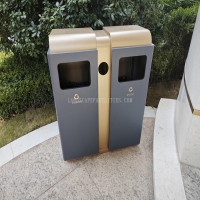Welcome to the website for landscape facilities products and knowledge.
How does the trash can’s design accommodate the use of RFID tags for tracking or management?
Modern waste management systems are increasingly adopting RFID technology to improve efficiency and accountability. The design of RFID-enabled trash cans plays a crucial role in facilitating seamless tracking and management.
1. Integrated RFID Reader Housing: These trash cans feature built-in compartments or mounts for RFID readers, ensuring they are protected from environmental factors like rain or dust while maintaining optimal signal reception.
2. Tag Placement Optimization: Designers strategically position RFID tags on bins—often on the lid or side—to ensure consistent scanning without interfering with disposal. The materials used (e.g., durable plastics) prevent signal blockage.
3. Ergonomic and Durable Build: RFID trash cans are constructed to withstand heavy use, with reinforced structures that protect embedded electronics. Their shapes often accommodate easy tag scanning during collection.
4. Data Connectivity Features: Many designs include wireless modules (e.g., Wi-Fi or cellular) to transmit real-time fill-level data or tag IDs to central systems, enabling dynamic route planning for waste trucks.
5. User-Friendly Interfaces: Some models incorporate touchless lids or weight sensors that trigger RFID scans automatically, streamlining the process for users and collectors alike.
By integrating these design elements, RFID trash cans transform waste management into a data-driven process, reducing operational costs and promoting sustainability.
Related search:

Recommendation
Double-bucket garbage bin, outdoor, metal, multi-color, powder-coated, double-bucket trash can